ADVERTISEMENT
Filtered By: Lifestyle
Lifestyle
A dream walk through a magical cloud forest
Text & photos by CECIL MORELLA
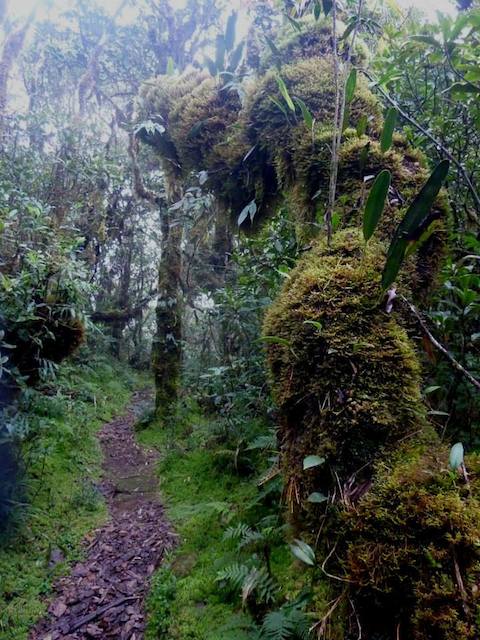 A thick soup of fog, white as the coconut milk of the lowlands, soaks through the otherworldly cloud forests of Bokod in the late afternoons of September, one of the rainiest months of the southern Cordilleras. It briefly disorientated two climbers trekking just in front of me as they tried to find the peak-top camp site of Mount Tangbao through the acres of tall grass.
A thick soup of fog, white as the coconut milk of the lowlands, soaks through the otherworldly cloud forests of Bokod in the late afternoons of September, one of the rainiest months of the southern Cordilleras. It briefly disorientated two climbers trekking just in front of me as they tried to find the peak-top camp site of Mount Tangbao through the acres of tall grass. It shrouded the land again late in the following afternoon, like cake icing over the tents pitched about 100 yards away atop a rise called Bangtinen, just below Mount Banshila. Sometimes the fog arrives with rain and a brisk, chill wind. Backpackers live for magical moments like these as they sit beneath their camp kitchen, tiny stoves on full afterburners, brewing coffee and boiling instant noodles so that, swaddled in fleece jackets and balaclavas, they can stare into the void, watching the water drip from the tarp while waiting for the day to turn into night.
I was doing Mt. Purgatory, a boomerang-shaped chain of mountains more than 2,000 meters above sea level, above the Ambuklao dam, for the second time in three weeks as part of a regular AMCI training climb. The stretch between the Tinengan forest and Mount Pack, also called Banshila, and including Mounts Komkompol, Tangbao, Purgatory and Bakian showcases some of the most beautiful cloud forests of the Cordilleras.
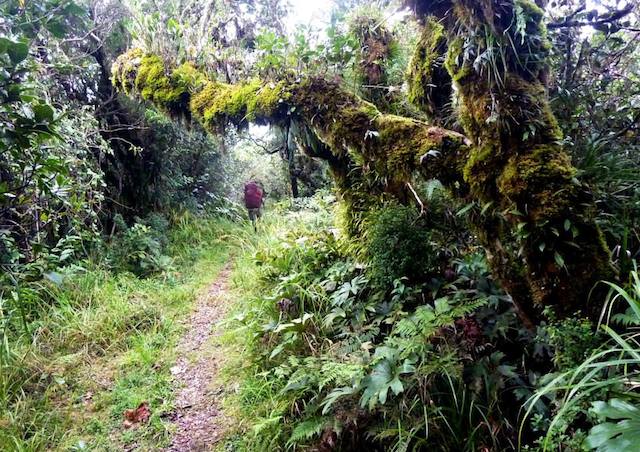

Though I was climbing with a fairly big group, I made it a point to separate from the pack and trek alone in the forest, drinking in the fascinating flora, the birds and insects that inhabit the low canopy of tiny leaves and moss-coated branches, and marveling at the earthmoving done beside the trail by largely invisible actors, giant earthworms and their predators, highland rats.
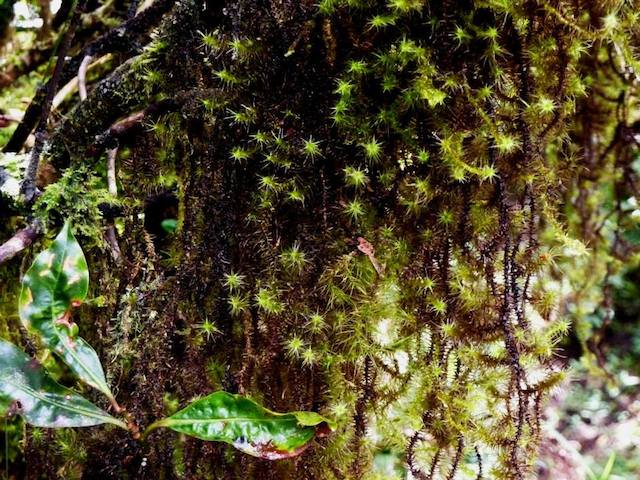 Even the pine forests below them were just wonderful to behold, rows upon rows of dark boles rising straight up below and above the trail, above the village of Ekip and below the Tangbao summit. All that green cover meant the mountains bled sweet, cold water, so that for most of the three-day hike I only had half a liter of hydration with me.
Even the pine forests below them were just wonderful to behold, rows upon rows of dark boles rising straight up below and above the trail, above the village of Ekip and below the Tangbao summit. All that green cover meant the mountains bled sweet, cold water, so that for most of the three-day hike I only had half a liter of hydration with me. I had no fear of getting lost, even in the dark, because the trails were well-marked, and anyway it was already my third time in these mountains in the past 20 months, having also done this climb solo early last year and as part of an AMCI reconnaissance team two weeks ago. Below Mount Pack we met another Manila group climbing from the opposite end, guided by an old man armed with a battle spear.
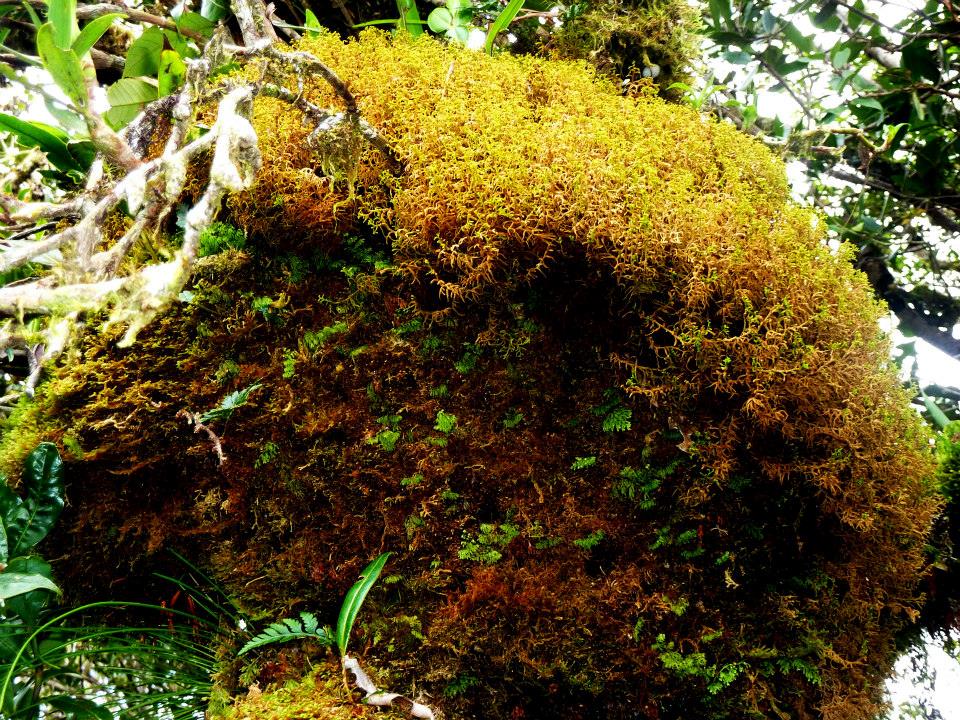 In the dim forest between Komkompol and Tangbao late on the first day I met two women, both laden with full sacks of newly harvested sweet potatoes, rushing to their homes in Naswak on the Kayapa town side from their swidden farms on the slopes of Bakian. I also saw a bird trap near the trail between Purgatory and Pack the following day.
In the dim forest between Komkompol and Tangbao late on the first day I met two women, both laden with full sacks of newly harvested sweet potatoes, rushing to their homes in Naswak on the Kayapa town side from their swidden farms on the slopes of Bakian. I also saw a bird trap near the trail between Purgatory and Pack the following day. I am not sure if my colleagues noticed any of these, or if the forests were even central to their experience. Some climb to be in wonderful company, others are up for the physical challenge, while the rest are in for bits of all three. Climbing mountains leads to sensory overload, and one is just as valid as the other.
Anyway, beautiful they may be, but make no mistake: these forests are under siege. There is massive land conversion going on along the pine forests uphill from the traditional Japas trail head, with the bigger trees chopped down for housing material and saplings burned down to create cabbage and potato plots. Even the cloud forests just below the Mount Pack summit are now being burnt, and so are those on Bakian.
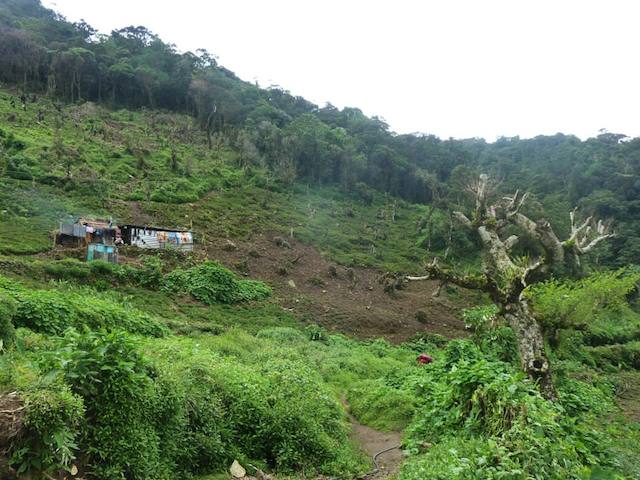

We may not readily realize this, but I believe we have but a few years left before this climb turns into the equivalent of Ugo, to the south of these mountains, and Batulao, near Manila. Both are denuded upland deserts, as far as I am concerned.
As a serious birder, I felt a strong urge to destroy the bird trap, a wall of wooden sticks with a gate snare, probably weight-activated. However this was tempered by the realization that if I did I would probably be committing a crime, not to mention burning bridges with the people of Bokod. Not all birds, and mountain mammals for that matter, are protected by law.
And so I let things be and concentrated on taking pictures. Pretty soon these would be all that we have. — YA, GMA News
For maps and more information about Mt. Purgatory, click here. The author is a 52-year old news editor who climbs mountains for fun with people half his age. This article was shortened and reprinted with permission from Cecil Morella's blog.
Tags: mountainclimbers, cordillera
More Videos
Most Popular




